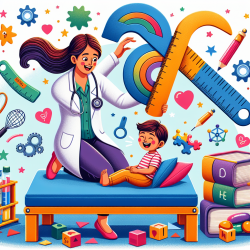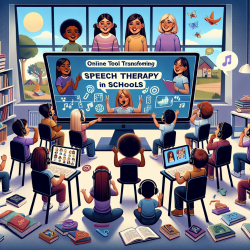In the ever-evolving field of special education and therapy, professionals are constantly seeking ways to refine their skills and enhance their practice. One area that demands our careful attention is the use of measurement tools in assessing and diagnosing our clients. Drawing from the insightful research presented by Rebecca McCauley in her article, "Continuing Peer Commentary Response to 'Measurement as a Dangerous Activity'," we find a compelling argument for the wise and informed use of these tools. This blog aims to explore how practitioners can improve their skills by implementing the outcomes of McCauley's research or by encouraging further research into this critical aspect of clinical practice.
McCauley's central thesis—that tests and measurements, while potentially dangerous, are essential tools in the hands of well-informed and critically thinking clinicians—serves as a foundational principle for enhancing our clinical acumen. Here, we delve into practical strategies for applying this wisdom in our day-to-day practice.
Understanding the Tools at Our Disposal
First and foremost, it is imperative for clinicians to deeply understand the measurement tools they use. This understanding encompasses not only the substantive area of the tool but also its psychometric properties, including reliability, validity, and standardization processes. A thorough grounding in test theory and construction is essential for selecting the right tool for the diagnostic decision at hand. Moreover, clinicians must be adept at interpreting both the test manual and the results, placing them within the broader context of the client's profile and other available information.
Critical Evaluation of Test Manuals and Results
McCauley warns of the dangers inherent in misinterpreting test results or choosing inappropriate tests. Thus, developing a critical eye towards test manuals and results is crucial. Clinicians should question the appropriateness of the test for their specific client, the quality of the test's construction, and how well the test has been normed and standardized. When test results do not align with other information about the client, clinicians must weigh the evidence carefully, sometimes placing less emphasis on test data.
Continual Education and Research
The field of measurement and assessment is dynamic, with new tools and theories emerging regularly. Clinicians must commit to ongoing education, staying abreast of the latest research, and critically evaluating new tools and methodologies. Participation in professional development opportunities, such as conferences, workshops, and webinars, is vital. Furthermore, engaging in or supporting research endeavors can contribute to the advancement of our understanding and application of measurement tools.
Practical Application in Clinical Settings
Applying these principles in clinical settings involves several practical steps:
- Before administering any test, thoroughly review its manual and ensure a comprehensive understanding of its intended use, strengths, and limitations.
- Consider the client's unique context, including cultural, linguistic, and developmental factors, when selecting and interpreting tests.
- Engage in reflective practice by regularly reviewing your test choices and interpretations in light of client outcomes and new research findings.
- Collaborate with colleagues to discuss challenging cases and share insights on the effective use of measurement tools.
- Advocate for the use of high-quality, research-backed measurement tools within your practice setting or school district.
By embracing a thoughtful and informed approach to the use of measurement tools, clinicians can enhance their diagnostic and therapeutic practices, ultimately leading to better outcomes for their clients.
McCauley's research serves as a powerful reminder of the dual nature of measurement tools—they are both indispensable and potentially hazardous. It is our responsibility as clinicians to wield these tools with wisdom, ensuring that our practice is guided by both knowledge and critical evaluation. Let us take up this challenge with enthusiasm, continually striving to improve our skills and contribute to the field of special education and therapy.
To read the original research paper, please follow this link: Continuing Peer Commentary Response to "Measurement as a Dangerous Activity" by Rebecca McCauley.










